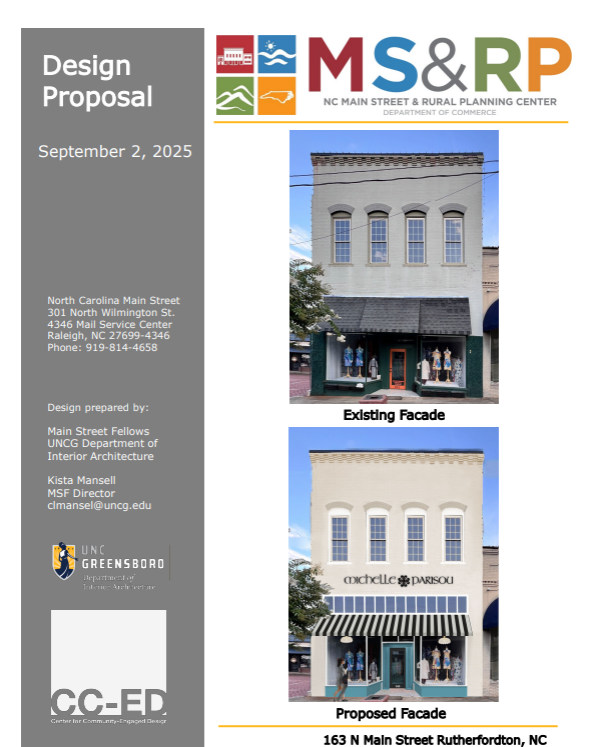Promoting Vacant Building Redevelopment:
- Staff

- Mar 29, 2021
- 3 min read

Elizabeth City and Tarboro:
Creating a model to peak redevelopment interest
We want to thank Jack Cassidy with the NC League of Municipalities for crafting a great article for the Leagues' Southern City Magazine. The article was written by the NC League of Municipalities in partnership with Hometown Strong and UNC's Homegrown Tools. The submission helps to educate people on a model that has proven successful in addressing vacant buildings in downtowns.
Read the Homegrown Historic Series Showcase article. Then begin discussing how this model can be used in YOUR downtown. We have captured the agenda portion of the article below. Elizabeth City's Tarboro's agenda is included at the end of this blog post to help communities across the state leverage this idea even further.
A Portion of the Homegrown Historic Series Showcase article.
The Agenda The city introduced the day with remarks from Mayor Bettie J. Parker and Assistant City Manager Angela Cole, then went into a session titled “Why Invest in Elizabeth City,” which was hosted by the local director of economic development. Just by virtue of hosting the event at all, one potential challenge was immediately addressed—that of local support—and this portion of the program hammered that sentiment of assistance home. The City put itself out there with a clear message: your success is our success.
“It showed that our city administration and government placed an importance on this type of project, and that we were going to be a support network, not a bureaucratic system to maneuver through,” Malenfant said. “I think it changed the perception and enabled people to take a breath and say, ‘Alright, the city is on board with this, so I think we can make it happen.’”
They were speaking to approximately 50 attendees, some of whom were interested buyers, and the rest a purposeful group of architects, builders, and contractors. No specific section of the agenda had been dedicated to this challenge. Yet, by assembling the right group, networking the needed parties became easy.
“We were going for quality over quantity,” Malenfant said. “We didn’t exclude anyone who wanted to be there, but the intent wasn’t just to do tours of cool old buildings. It was to do a very specific approach to recruit people to invest and restore these buildings.”
Long recalls event organizers at one point almost having to force attendees to stop talking. “These weren’t general conversations,” she said. “They were seriously talking about project ideas, very specific, and very detailed.” Even before getting to the crux of the Showcase, the backlog that had stymied Elizabeth City’s historic rehabilitation efforts began to be relieved. “It blew up the bottleneck we were struggling with. It partnered people with resources across the state and even into Virginia.”
Next, the educational portion of the Showcase began: three presentations, all focusing on the tax credits. An architect, who had led numerous historic preservation and adaptive reuse projects, began with a session on the Secretary of the Interior’s Standards for Rehabilitation, and a property investor who is also a board member for Preservation North Carolina finished the early portion of the day with “Tax Credit Financial Structure 101.” Bartos spoke in between and provided an overview of potential projects. Malenfant and Long received emails afterwards from attendees letting them know how informative they found those events.
Finally, the actual Showcase began. Elizabeth City and HPO staff targeted five potential projects to tour and scheduled a look at an already-underway tax credit rehabilitation project that had been successfully progressing. The tours took a total of three hours. Attendees saw these five properties in a setting that encouraged creativity and brought out ideas with each additional revealed detail. Then, to gift wrap the experience, they walked through an ongoing project that made the prospect seem all-the-more real.
“Often, they cannot even conceptualize how to make it happen,” Long said. “So, we showed them. ‘Here are the successes, and here’s how you can do it.’ The balance between success and how-to was a strong component of this.”
Within a few months, three of the five properties had sold and were working with HPO. A fourth, which garnered the most immediate interest, was under contract before the deal fell through due to COVID-19, though interest remains high. Malenfant is quick to note that these were not hot properties beforehand. In fact, they had almost no interest.

